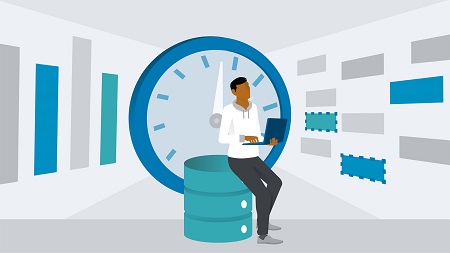
English | MP4 | AVC 1280×720 | AAC 48KHz 2ch | 1h 18m | 178 MB
Time series data is data gathered over time: performance metrics, user interactions, and information collected by sensors. Since different time series data have different measures and different intervals, these data present a unique challenge for data scientists. However, SQL has some features designed to help. This course teaches you how to standardize and model time series data with them. Instructor Dan Sullivan discusses windowing and the difference between sliding and tumbling window calculations. Then learn how SQL constructs such as OVER and PARTITION BY help to simplify analysis, and how denormalization can be used to augment data while avoiding joins. Plus, discover optimization techniques such as indexing. Dan also introduces time series analysis techniques such as previous time period comparisons, moving averages, exponential smoothing, and linear regression.
Topics include:
- Basics of time series data
- Writing time series data
- Querying time series data
- Installing PostgreSQL
- Evaluating query performance
- Joining time series
- Denormalizing time series
- Indexing data
- Querying a partitioned table
- Functions for time series
- Calculating aggregates over windows
- Calculating moving averages
- Forecasting with linear regression
Table of Contents
1 Learn time series data analysis with SQL
2 What you should know
3 Characteristics of time series data
4 Examples of time series data
5 Writing time series data
6 Querying time series data
7 Installing PostgreSQL
8 Creating schema and tables
9 Timing a query
10 Evaluating query performance with EXPLAIN
11 Time window queries and aggregates
12 Sliding windows
13 Tumbling windows
14 Joining two time series
15 Denormalizing time series data
16 Example data set 1 Temperature by time and location
17 Indexing data set 1 Time index only
18 Indexing data set 1 Time and location index
19 Creating a partitioned table
20 Querying a partitioned table
21 Example data set 2 CPU utilization and application type
22 Indexing data set 2 Time and type Indexing
23 Lead
24 Lag
25 Rank
26 Percent rank
27 Common Table Expressions and recursion
28 Calculating aggregates over windows
29 Previous day comparison
30 Moving averages
31 Weighted moving averages
32 Forecasting with linear regression
33 Exponential moving average
34 Next steps
Resolve the captcha to access the links!